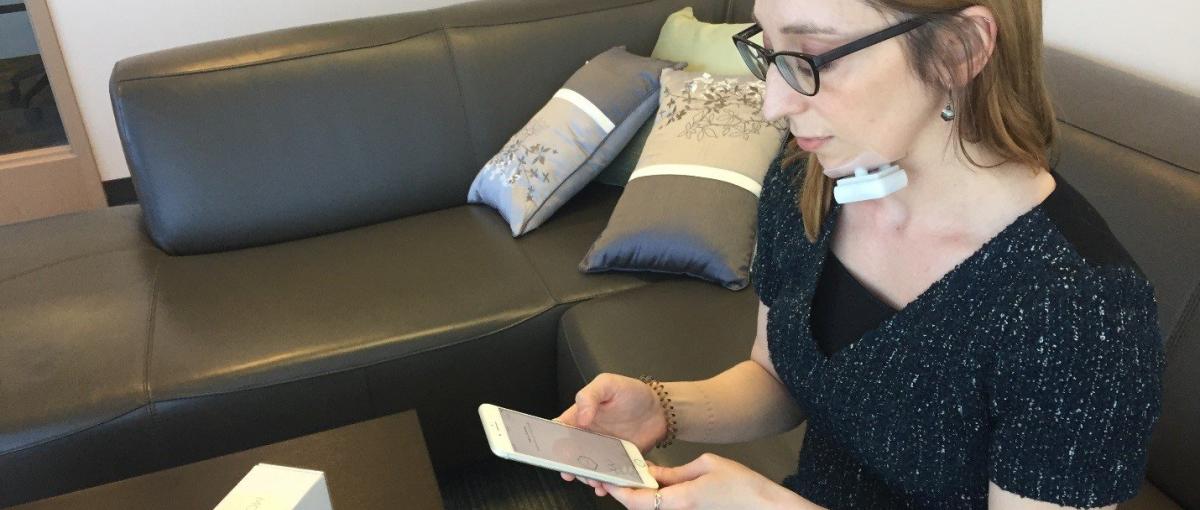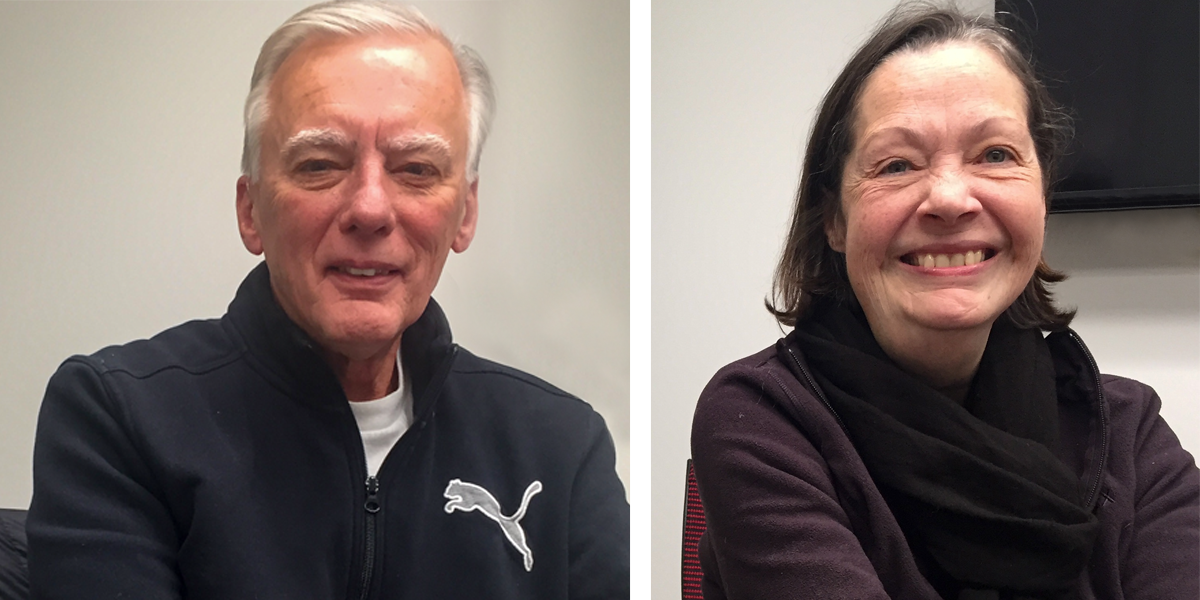New device helps patients with swallowing disorders
Head and neck cancer patients test made-in-Edmonton Mobili-T

April 4, 2019
By Marguerite Watson, Senior communications advisor, Covenant Health
Thanks to new mobile technology, Scott Ellis and Leslie O'Connor-Parsons are finding it easier to swallow more than soup and soft food.
Scott, 63, says he's not coughing as much when he eats. And Leslie, 59, says she's looking forward to expanding her diet.
“It is very empowering to think I might be able to choose what to put in my mouth,” says Leslie.
Scott and Leslie recently participated in a six-week clinical trial of the Mobili-T, a new mobile device developed by researchers at the Institute for Reconstructive Sciences in Medicine (iRSM) and the University of Alberta in Edmonton to help patients with swallowing disorders, or dysphagia. The device allows patients to work on their swallow therapy exercises at home on their own schedule while doctors monitor their progress.
Like other patients in the trial, Scott and Leslie have dysphagia as a result of cancer surgery and treatment. Scott's salivary glands were damaged by radiation treatment following surgery for neck cancer, and over time, the tissue and muscles used for swallowing have become less flexible. “The flap doesn’t close properly, so you get leakage, which can be a problem if it happens regularly,” Scott says.
For Leslie, the issue is struggling to swallow with a tongue made from a muscle in her leg as part of surgery for tongue cancer. “Food can move the wrong way when I eat, which can be quite threatening,” she says.

Scott Ellis and Leslie O'Connor-Parsons
About 50 to 70 per cent of patients who've had neck cancer have some difficulties with swallowing, says Gabi Constantinescu, PhD, co-lead of the Head and Neck Surgery Functional Assessment Laboratory at the iRSM. And swallowing difficulties can lead to serious health issues, such as malnutrition and dehydration or pneumonia if food or liquid gets into the lungs.
The idea for the Mobili-T came from a gap Gabi and her colleagues saw in the therapy available to their patients at the iRSM clinic. To be effective, swallow therapy for most patients meant visiting the clinic every day for six to eight weeks and being connected to a machine the size of a refrigerator. Because of the time commitment required, only about 10 per cent of the patients who would have benefited from therapy were coming to the clinic once or twice a week, says Gabi.
Gabi and her colleagues thought there must be a way to make a device small enough to allow patients to do their swallow exercises at home. With funding from the Alberta Cancer Foundation, Jana Rieger, PhD, director of research at the iRSM, brought together a team of biomedical engineers and other professionals who developed an electronic “bread board” of the large swallow therapy machine. The engineers then made this device smaller and smaller until they had a handheld wireless version they could send home with patients.
“That took five or six years, and we're still working on it,” says Gabi. “Right now, we just have what we call a minimum viable product.”
Attached under the patient's chin, the Mobili-T has three electrodes that detect how hard the muscles are working when the patient swallows. It sends this information to a mobile app the patient can monitor as well as to Gabi and the other researchers on Jana's team. Patients also get feedback on whether they should exert more effort or keep repeating their exercises.
“You could compare it to a workout buddy,” says Leslie.
“If you just have to sit down and swallow, it's kind of a boring thing, whereas if you get that feedback, you're more apt to do it,” Scott says.
Though she and her colleagues are still analyzing the data from the clinical trial, Gabi says some patients have reported that their swallowing has improved using the device.
For the researchers, being able to see their patients' experiences with different exercises will lead to future studies. “If something works or doesn't work, we can tie it back to how much of that exercise was actually done,” Gabi says.
Depending on logistics and funding, the researchers hope to do more clinical trials of the Mobili-T, possibly with other patient populations that suffer from swallowing disorders, such as victims of stroke or traumatic brain injury. They'd also like to test future versions of the device at other clinics in the province.
“We're already thinking a couple of iterations ahead for the next trial,” says Gabi.
Gabi and her colleagues plan to release a commercial version of the Mobili-T in the near future, and both Scott and Leslie are interested in having the device to use on a regular basis.
“It would motivate me to do the exercises, and I would hopefully improve or at least keep my swallowing to a level that's it at now,” says Scott.
“It really is good to use the technology. It gives me some hope about a different food picture on the horizon,” Leslie says.